Martha Canfield
Dos enfoques de Pedro Páramo (1989)
Vínculo al texto original:
Vínculo a la primera parte:
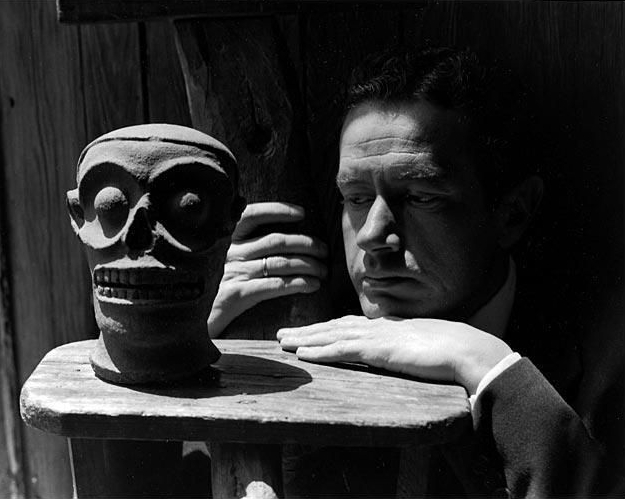
Juan Rulfo
Martha Canfield es una escritora, poeta, traductora y profesora uruguaya radicada en Italia. Es una especialista en literatura hispanoamericana y su extensa obra incluye trabajos de crítica y análisis literario, traducciones al italiano de autores hispanohablantes y al español de autores italianos y varios poemarios de su autoría, tanto en español como en italiano. Semejante carrera le ha hecho merecedora de diversos premios y reconocimientos; también forma parte de la Academia Uruguaya de Letras y es profesora en la Universidad de Florencia, en Italia. Un ejemplo pequeño pero muy bello de su obra es la colección de poemas Orillas como mares, que recomiendo leer.
Este fascinante análisis de la novela magistral de Juan Rulfo, Pedro Páramo, se publicó originalmente en Revista Iberoamericana, vol. LV, n. ° 148-149, julio-diciembre, 1989. Vale aclarar que, para las citas tomadas de Pedro Páramo y de El otoño del patriarca de Gabriel García Márquez, opté por proporcionar también mis propias traducciones. Por lo demás, la calidad del estudio de la profesora Canfield y lo iluminador que me resultó a la hora de entender el maravilloso Pedro Páramo son sobrada justificación para haber querido reproducir este texto en inglés. Mi profundo agradecimiento a Martha Canfield por haber consentido tan amablemente en que publicara aquí la traducción de su trabajo.
Two perspectives of Pedro Páramo
2. JUAN PRECIADO AND THE FAILED MYTHICAL JOURNEY
Pedro Páramo is undoubtedly not only a masterpiece of contemporary prose, but also a fascinating novel which has garnered critical attention like few others. Leaving aside the historical perspective —which sees in it, above all, a picture of the Mexican provinces in the times of the Cristero War—, many authors have tried to decipher in it the hidden clue of some universal myths. But, in fact, it does not fully conform to any of those views. Seeking to lend plausibility to his equations, Carlos Fuentes had resorted to the strategy of inverting and combining myths: Juan Preciado would thus be a young Telemachus who embarks on a “counter-Odyssey” to find his father —“counter”, perhaps, because the son is not moved by love, but hatred—; he would be an “Oedipus-Orpheus” who descends into Hell driven by the “mother-lover Jocasta-Eurydice”; Susana San Juan would be a “reverse Electra”; and Pedro Páramo himself, a “stone and clay Ulysses” (Fuentes, p. 16).
More justifiably, Julio Ortega referred to the journey of Moses in search of the promised land; but, above all, he opened the door to a more precise interpretation when he individualised in the novel not a specific myth, but a mythical trait or mytheme, that is, the search for the father; and when he accurately saw this search as a metaphor of the young man’s development process: “In search of the father, the hero seeks and finds, or loses, his place in such reality” (Ortega, p. 18).
We believe, in fact, that assimilating Rulfo’s novel to this or that myth will not succeed in elucidating that “mythical background” which “includes the themes of the Mexican land and revolution within a universal context” (Fuentes, p. 16); on the contrary, in Juan Preciado’s adventure, we should discover the unique structure common to a range of myths. His journey certainly conforms to the conventional parable of the hero, the core of a single mythological theme of descent (kathodos) and ascent (anodos), which reproduces in turn the formula of the rites of passage. From Jung we know that many of the symbols and images appearing in rites and myths are also present in the dreams of analysed patients and in the adventures of literary heroes. Pedro Páramo is another version of what Jungian scholar Joseph Campbell has called the “monomyth” (Campbell, p. 33).
We should remember that the purpose of the “rites of passage” —ever-present in primitive societies and barely recognisable in some expressions of our civilisation— was to assist people in key moments of their lives, that is, each time there is a “transformation” or “passage”: birth, name imposition, puberty, marriage, death, etc. Ritual ceremonies were true trials for the candidate, often difficult to perform, and their role was to erase from the mind the tendencies, affections, or customs of the previous status. There followed a variable period of solitary retirement, during which there took place other ceremonies to present the initiate with the forms and feelings proper of his new condition, so as to make of his return to the normal world something like a second birth (Campbell, p. 17).
In myths, legends, etc., the conventional parable of the hero’s adventure reproduces the basic formula of the rites of passage: separation-initiation-return. It reproduces what Campbell calls “the nuclear unity of the monomyth”. “The hero abandons the normal world to adventure himself into a wonderful, supernatural kingdom; there he finds fantastic forces and obtains a decisive victory: afterwards, he returns from his mysterious adventure, endowed with the power to propagate happiness among men” (Campbell, p. 34).
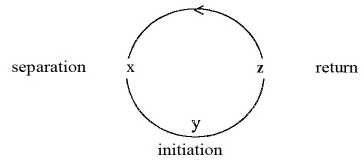
Thus, for instance, Prometheus ascends to Olympus, steals the fire from the gods and returns to Earth with this essential gift for men. Jason travels to Colchis, numbs the dragon guarding the Golden Fleece, takes hold of it and returns to his fatherland to recover the throne which had been taken from his father. Aeneas descends into Hades, crosses the terrible Acheron, throws a loaf at Cerberus and talks to his father; he returns with the treasure of the revelations communicated to him. Theseus arrives at Crete, goes inside the labyrinth, kills the Minotaur and returns, as saviour of the Greeks.
Juan Preciado leaves his mother’s house, descends into the hell of Comala and finds the shadow (traces, echoes, testimonies) of his father. But instead of a victory, he finds his own death, and the return does not occur. Thus, the cycle is left incomplete. Now, when in a given fable, legend, story or myth some basic element of the archetypical model fails —says Campbell—, this element lays inevitably hidden in some way or another, and its apparent failure illuminates the story (or pathology, in the case of a patient’s dreams).
If the journey to Comala represents the psyche’s descent into the depths, the fact of not returning marks an irreversible pathology. The rite of passage from puberty to maturity is left incomplete: the boy does not grow and dies. If the journey to Comala is a parable of Mexico’s historical destiny, Rulfo’s vision is revealed to be manifestly pessimistic. This is best understood in light of the very structure of the novel, in which, following established opinion, we can distinguish two parts: the first one ends with the death of Juan Preciado; the second one begins with the dialogue of the buried, Juan Preciado and Dorotea.
Although the novel is presented as a series of 68 narrative units divided by blank spaces, without any other typographical signs, the dual structure seems undeniable. In the first place, it is confirmed by a double symmetry: spatial, since the first part comprises units 1-34, while the second part comprises units 35-68; and thematic, since both parts conclude with the death of the main agonist —the first one with that of Juan Preciado, and the second one with that of Pedro Páramo—. In the second place, the second part marks a radical change of narrative perspective or point of view: in the first part, the reader is convinced that Juan Preciado lives, so he is presented as a homodiegetic narrator, alternating his voice with that of a heterodiegetic narrator successively focused in Pedro Páramo as a child, in Father Rentería as obsessed with the young Miguel Páramo, and in Fulgor Sedano. In the second part, we discover that the homodiegetic narrator was not so, but that his narration had a precise addressee within the novel, that is, the character of Dorotea. Therefore, everything we get to know, given that it is referred by the buried, must be considered at a mimetic level, as intradiegetic narration, including the voices coming from other tombs (Susana San Juan in units 40, 51 and 54; one of Pedro Páramo’s victims in unit 41); while in other narrative units —which comprise the majority in this second part—, the same heterodiegetic narrator of the first part resumes the story of Comala, focusing now in the characters around Pedro Páramo as an adult, namely, his son Miguel, Susana San Juan, the revolutionaries, Gerardo Trujillo, Damiana Cisneros, Abundio Martinez and, finally, the dying Pedro Páramo himself. (In the proposed diagram, the characters’ names are indicated with their initials, the numbers correspond to the narrative units, the dividing bars mark the sequences, and the zigzagging arrow represents the reading line in a special order.)
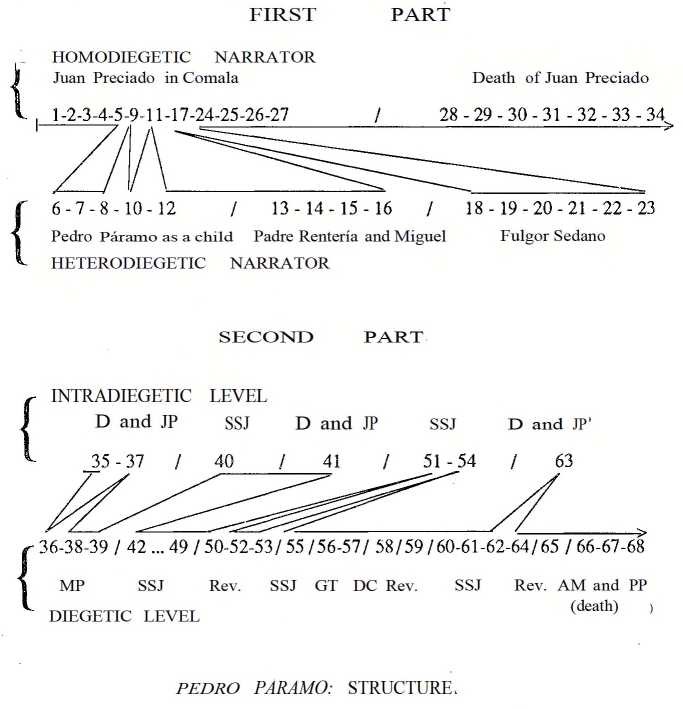
Visualising the structure is also helpful to shed light on the two narrative times matching the two narrators: the achronous time of the son, homodiegetic narrator, wherein the few events in his story are quickly overshadowed to give way, in the second part, to the invasion of voices which are assimilated in the heterodiegetic narrator’s time, that is, the past time which is nothing but the father’s memory. The alternation of the two times —beginning with the implicit horizontal motion in “I came to Comala” and ending with the implicit vertical motion in the fall of the dead Pedro Páramo— suggests that the father’s time, beginning in unit 6 when it mentions the water, assaults the son’s time, overwhelms it like an unstoppable mark, confounds it and finally makes it stop in the stone wall of his own fall. It likewise suggests that the son shall always be too late to kill the father; it is first the father who, with the force of his live memory, kills the son. The myth of Chronos, who devours his sons, comes up unexpectedly to give the story a paradoxical and, incidentally, undesirable result: the time of the father annihilates and devours the time of the son. In the second part, indeed, Juan Preciado ceases to speak about himself and becomes a mere receiver of the voices retelling the story of his father. Thus, it will be impossible to overcome the Oedipus, and the evolution, the passage, shall remain halted, unsolved. In the Rulfian Weltanschauung, the history of Mexico is shown to be stagnated in a point whence it cannot proceed (“In Mexico, we have reached a stalemate”). Juan Preciado’s adventure starts as a journey to conquer the fortune he is owed. He is moved by “illusion”: “I began to be full of dreams, to give vent to illusions. And so I began to form in me a world around the hope which was that man called Pedro Páramo” (PP, p. 7). So much so that he projects such hope onto the landscape: “Everything seemed to be like expecting something” (PP, p. 9).

The journey implies, as in the cosmogonic cycle, a descent and an ascent: “The road went up and down: it is upwards or downwards depending on whether you go or you come. For those who go, it is upwards; for those who come, it is downwards” (PP, p. 7). But the directions are given from Comala, even though the mother is not there: the possibility of returning is subtly denied.
The hero’s birthplace, or else the far-off land of exile, from which he returns to accomplish his feats —in this case, Comala—, is usually presented with the characteristics of what in the cosmogonic cycle is known as “navel of the world”, and it is the centre of the symbolic circle of the universe. In fact, in Comala we are over the Earth’s rotation axis: “In the beginning of dawn, the day keeps rolling over, taking pauses; one can almost hear the Earth’s mouldy hinges rotating […] Do you not hear the Earth creaking?” (PP, p. 103).
The “navel of the world” —which is likewise ubiquitous, because the Whole is everywhere and any place can become the seat of power— is the source of all existence and, therefore, produces everything that is good and everything that is bad. Neither Dolores nor Juan Preciado are wrong, despite having radically opposed perceptions of Comala’s landscape: she sees the yellow colour of the spikes and feels the freshness of the rain, the smell of spilt honey in the village, the flavour of the orange trees; he only sees the desert, feels the numbing heat of the dog days and the rotten smell of the soapworts (PP, pp. 7-21). Each of them is actually looking at one side of truth. If Juan Preciado overcame the trials he is to find in his way, he would also see Comala with the eyes of his mother and would discover, through a new maturity and an old wisdom, the meaning of unity in multiplicity. However, he cannot see anything but Comala’s demonic aspect: atop the mountain there is no city of the gods, as it is generally told in myths, but a dry land, with a suffocating climate and a dead people of sinners at its feet. Instead of the archetypical endless source of pure water, Juan Preciado sees a desert resembling a lake in the reverberation of the Sun (PP. P. 8): images of stagnation and exhaustion. In the heights, there is no sight of the golden sun bird, a harbinger of triumph, but —sinister omen— of a flock of crows traversing the empty sky (PP, p. 9).
As in the conventional parable, in the road to his destiny Juan Preciado finds a guide, Abundio Martínez; but this is a degraded guide who cannot give our hero any useful advice to help him overcome the trials he shall encounter. On the contrary, Abundio is annoyed at him (“Fuck you!”, p. 10), and then leads him to Doña Eduviges, who, like him, is merely an illusion, a ghost. Moreover, Abundio, who represents the dangerous aspect of the mercurial figure, is the killer of Pedro Paramo, although this remains unknown until the end of the novel; and in this hidden fact lies another key of the failure of Juan Preciado. The son will be unable to confront the real father; in his absence, the ideal father takes a gigantic dimension, and it will be impossible for the son to survive (Safouan, pp. 42-49).
When Juan Preciado enters Comala, he finds a dead village, where the echoes of past conversations still linger around each corner and between the walls of empty rooms, as if the lack of air allowed them to float in the achronous disorder. Because in Comala, in effect, there is no air: stagnation in time seems to be matched by stagnation in the atmosphere. “After going around the hills, we went down and down. We had left the hot air up there and gradually drowned in the pure heat without air” (PP, p. 9). According to Juan Preciado, that is what kills him, rather than fear: “There was no air. I had to inhale the same air which came out of my mouth, holding it up with my hands before it went away. I felt it come and go, each time less; until it became so thin that it filtered between my fingers for good” (PP, p. 56).
But what Dorotea says —that Juan Preciado died out of fear—, is also true: “The two of us hauled you unto the shadow under the gate; by then you were very tense, cramped as the dead who die their death out of fear” (PP, p. 56). The hero’s adventure is always a passage from the known to the unknown. Leaving home and the village (the separation) means penetrating into the unknown, where danger is lurking. The adventure is always a risk, but for him who is capable and courageous, danger is dispelled (Campbell, p. 79). The hero has answered the call and is confident, he finds as if by miracle the “eternal guardians” who shall help him. In the analytic version, the call opens the way for a mystery of transfiguration, for what the mystics call “the awakening of the self”, for a spiritual passage which, if complete, takes on the value of a death or a birth (Campbell, p. 53); and if the person has faith, he shall have on his side the full forces of the subconscious to support him.
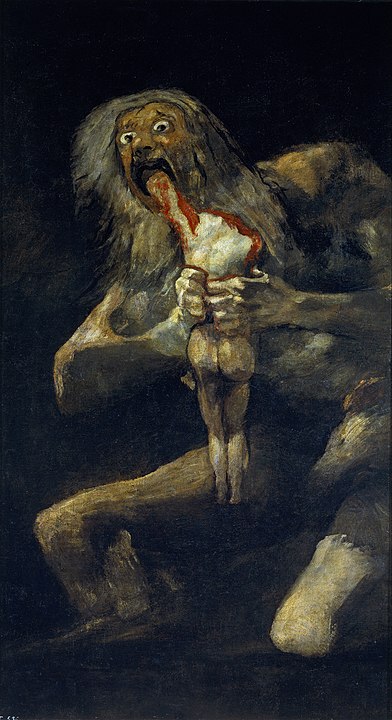
Saturn [Chronos] devouring his son, Francisco de Goya
The adventure of Juan Preciado is faulty from the very beginning. In his case, the call is his dying mother’s request, which he answers with an inner negation: “‘I shall do so, mother.’ But I did not intend to keep my promise” (PP, p. 7). Hence, there is an initial disobedience. And then, which dreams, which secret fantasies are truly prompting him to search for “that man called Pedro Páramo”? We do not know. But the drive of rejection is still operating on him, emptying him of that trust in his mother’s word which would allow him to see Comala with her eyes. Juan Preciado foregoes the gift of his mother: “She gave me her eyes to see” (PP, p. 8), he says, yet it is hard to imagine a starker contrast between what he describes and the words he recalls.
Like Ariadne in the myth of Theseus, the Virgin in the legends of the Christian saints, or the old woman in European fables, Beatrice in the Divine Comedy, or Helena in Goethe’s Faust, Juan Preciado’s mother personifies the role of the Cosmic Mother, who intervenes upon the monomyth. Nothing bad can happen to the hero who commends himself to her protection (Campbell, p. 70). But Juan Preciado, as we have seen, does not understand the true significance of the call; he answers wrongly, and though he parts, he does so beset by prejudice, fear and mistrust. The projection of his lack of faith is evident in the dramatic dialogue of unit 32, not accidentally shortly before his death. “Can you not hear me?”, asks Juan Preciado, and even “Can you not see me?”; and she answers: “No, son, I do not see you”.
The mother’s denial (though it is actually the son who denies the mother), is followed by Juan Preciado’s ultimate test, the most difficult one. Here too he shall be the defeated, not the victor, and he will die afterwards. The test consists of his encounter with the living woman who offers herself to him; naturally, the dilemma is to accept her or to reject her. The episode is given a central place within the novel (units 31 and 33), and though in general the critics have highlighted its relevance, its meaning has not yet been convincingly elucidated.
The setting of the sequence characterises a particular mythical moment, combining the time immediately after the expulsion from Paradise and the Apocalyptic time. There are many signs of nearly complete destruction. The site —Dolores’s former Paradise— is always Comala —Hell or Paradise, depending on the beholder— and it is always the navel of the world, the centre of the Earth. Therein come together “a multitude of roads”, and above all, there is one “which traverses the whole land” (PP, p. 50). It is inhabited by grieving souls, by “people who died without forgiveness” (PP, p. 51). There remain almost exclusively two living people: a brother and a sister who have no notion of boundaries (“Remember that time when some people came here saying they were lost. They were looking for a place named Los Confines [lit. The Boundaries] and you told them you had no idea where that was” (PP, p. 47)), and who live in a house with half the ceiling fallen on the ground. Furthermore, “she was in the raw, as naked as the day she was born. So he was” (PP, p. 47). They have an incestuous relationship.
Thus, they turn to be the possible primordial couple of a possible future, if there is to be one. They represent the only chance. “We were so alone in here”, she says, “that the only ones were us” (PP, p. 51). But they are also a couple beset by guilt; a guilt which, incidentally, no one is free of. Neither the dead —as we shall see in the second part, through the voices of the buried— nor the living: “None of us who still live is in the grace of God. No one shall be worthy of lifting up his eyes unto heaven without feeling them unclean with shame” (PP, p. 51).
The guilt is incest, less evident in other characters and manifest in the couple: “I wouldn’t speak if seeing that one stirring up didn’t remind me of what happened to me the first time you did it. And how it hurt me and how much I regretted that […]. How I felt as soon as you did that to me, which like it or not, I knew it was badly done” (PP, p. 48). Even though the sense of guilt is followed by the need to excuse herself: “And somehow the village had to be populated” (PP, p. 51).
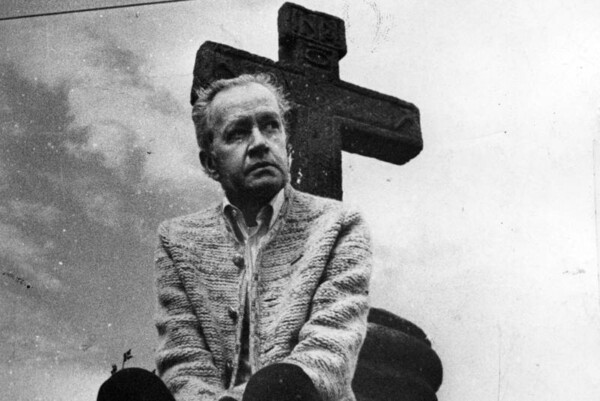
The woman is probably old, like the mysterious sister of the sheets, and disgusting before the eyes of Juan Preciado, as much as everything surrounding her:
Then a dark room. A woman snoring by my side. I noticed her breathing was irregular, as if she was dreaming, or rather as if she was not sleeping and only imitated the sounds made when sleeping. The bed was made of bamboo and was covered with sacks smelling of urine, as if they had never been aired under the sun; and the pillow was a cotton rag wrapped around some pochote or a wool so hard or sweaty that it had become as hard as a log […]. That woman’s body, made of earth, blanketed with earthy layers, fell apart as if it was melting in a mud puddle. […] Out of her mouth came a sound of bubbles very much like a rale (PP, pp. 54-56).
The woman, who has mercy on him and manages to get him something to eat and drink, offers herself to him, first implicitly, and later on quite explicitly. When they are alone, she assures Juan Preciado that her husband-brother is not coming back, that he will surely take the opportunity of having another man round to abandon her. She seems to have no doubt that Juan Preciado could take care of her: “Maybe, unbeknownst to me, he left me with you to take care of me” (PP, p. 54). Afterwards, in view that her host does not or wishes not to take the hint, she changes the usted [Sp. formal “you”] for the tú [Sp. informal “you”] and makes a straight suggestion: “Now you’ll be in charge of taking care of me. Or what, don’t you want to take care of me? Come here and sleep with me” (PP, p. 55). Juan Preciado refuses: “I am fine here”. Then, she finds a way to convince him: “It’s better for you to come into the bed. You’ll get eaten by ticks over there” (PP, p. 56). But Juan Preciado cannot overcome the disgust he feels for her, and soon after having lied down by her side, he gets up and goes into the street, where he is to meet his death.
Now well, in the figurative language of mythology, the woman represents the totality of what can be known, and the hero is the one who seeks to know. He must only know and have faith, and the obstacles will be overcome as if helped by supernatural beings. But, as we have seen, Juan Preciado neither has faith nor knows. To begin with, he does not re-cognise the Comala described by his mother. Then, he does not understand. “What do you understand?” he is successively asked by the man and the woman. And he answers: “Nothing. I understand less and less” (PP, p. 52). Hence, he considers returning. But returning at that moment would mean admitting the failure of his quest.
It is common to find in legends and popular tales horrible characters which, by virtue of love or just a kiss, are transformed into splendid princes or princesses. In the story of the five sons of Eochaid, king of Ireland (taken by Chaucer in The Canterbury Tales, “The Tale of the Wyf of Bathe”), the horrible, repugnant old woman who guards the water in a fountain is transformed into an extraordinarily beautiful young lady when the youngest son kisses her. The others are incapable of seeing beyond her disgusting appearance and reject her, thus missing not only the water they were looking for, but also the precious gift of revelation conveyed by this metamorphosis. By accepting to kiss her, the fifth son, a child and the last heir to the throne, becomes at once a man and the first heir, signalling his future as king.
The woman is the guide in the sensual adventure lived as something sublime. “He who is incapable of seeing sees her under miserable forms; he who is ignorant and evil sees her ugly and banal. But she is redeemed by he who understands. The hero capable of taking her for what she is […] is potentially the king, the god incarnate, of her created world” (Campbell, p. 306). At the very moment he possesses her, that is, when he knows and dominates her, he recognises the mother in her, and he discovers that he and the father are but one: he has taken the place of the father. He has assimilated his own contrary, his unsuspected self. And it is in this identity of the contraries in a single flesh, in this discovery of unity in multiplicity, wherein lies the new wisdom and maturity of the hero who, having arrived at the place of initiation as a child, once overcome the trials, returns to his world as a man.

The tale of the Wife of Bath, Edward Coley Burne-Jones
The woman who offers Juan Preciado her hospitality, the only one who truly offers him food and heat, naturally cannot cease to be what she is and what has caused disgust in Juan Preciado. This is not the realm of legend. But she can also be what he is incapable of seeing: his only possible refuge, the only rope by which he could come back to life, that life he has left when he fell into the deadly pit of Comala. However, Juan Preciado, as we see, does not understand, “he understands less and less”, and so he rejects the woman, thus committing a serious fault.
This fault, which may still seem casual, is the consequence of a guilt Juan Preciado bears with him and which shall decide his destiny. At this point, it cannot be paradoxical to assert that the guilt he carries inside is the guilt of his father, because he is his father. For the spontaneous and somewhat rustic intuition of the woman, this is quite clear: “He rubs against the floor, writhing. He drools. He must be someone who owes many a death” (PP, p. 49). But he never gets to understand or recognise his own dreadful part. The horror literally takes his breath away, and he dies.
Still, in the symmetry of the universe Rulfo, like Borges, believes in, the death or, better still, the eternal rest of Juan Preciado must correspond to his life as does a mirror with that which reflects. And so, the horrible woman, made of mud, falling apart, becoming again what she was before creation and whose hug Juan Preciado has rejected with disgust, will find a perfect substitute, equally pathetic and somewhat more ridiculous, in that crazy, old Dorotea who is buried between his arms for her to decompose over him for eternity, mud over mud, until the final consumption of the bodies.
Dorotea, who was unable to be a mother, finds at last the son she wished her whole life in the form of Juan Preciado; but owing to an inversion in order, he finds him not to embrace him with her arms, but to be embraced by him. He, in turn, not having found the father he came for and having lost his mother without knowing a woman, by virtue of an unsettling symmetry —or of a rigorous geometry entailing a rigorous sense of transcendent justice, as if Rulfo’s characters were subjected to the Dantesque law of contrapasso—, embraces in the tomb the woman he has not hugged when alive, and that woman turns out to be his mother and child, as he is for her, doubly and mutually. This role exchange and reduplication, which restores an initially disrupted balance —much more common in the complex chess of human relations than what its paradoxical formulation may suggest—, is drastically expressed in the 1936-1937 painting Magritte entitled, precisely, L’esprit de la géométrie: in it, the mother’s body has a large child’s head, and the little body of the child she holds in her arms is crowned with a little mother’s head.
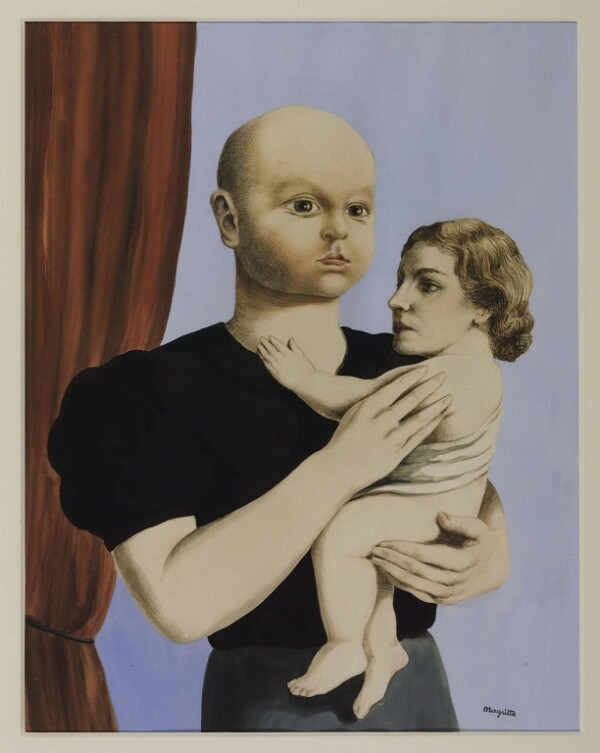
The spirit of geometry, René Magritte
A failed initiation journey, Juan Preciado’s journey to Comala is the symbol of an interrupted growth; and its protagonist can be read not only individually, but also as the embodiment of a people in the course of an incomplete development. Furthermore: which seems impossible to complete.
The humiliated mother, the terrible father, the son’s hatred and, consequently, patricide and incest —i.e., the infringement of the repressive law imposed by the father—, either consummated or desired, effective or symbolic: these are the points upon which the ancestral Oedipus or father complex is drawn. In terms of Lacan-Safouan, the conflict is between repressive law, identified with the ideal father who forbids everything, and transgressive desire, experienced by the son; between them, the real father is to act as mediator. Upon the universal archetype, Rulfo builds the Mexican type. And through the archetype, his shadowy world becomes illuminated.
Everyone is guilty. And the guilt par excellence is the weakness of the flesh. Given that life separate from the body is inconceivable, it is nothing but sin. This is lapidarily declared by the novel’s most sensual character, Susana San Juan (PP, p. 103). The desired body is always a forbidden or impossible body: hence the suffering. Florencio is dead, and desiring him is a bane in itself. The children Susana and Pedro are not allowed to see each other; and in fact they do so in secret. Incest, whether direct or indirect, manifest or latent, is a constant theme in the novel. The relationship between Susana San Juan and her father is incestuous, as the critics have evinced and Rulfo himself has admitted. But so is the relationship between Eduviges and Miguel Páramo, whom she raises first and then sexually initiates. And the theme of patricide is constant too, made manifest only in the novel’s final scene, but reproduced in many stories where the purpose of the father’s murder is to obtain the forbidden woman. Remember that not only does Pedro Páramo kill Bartolomé San Juan for Susana to be left exclusively at his mercy, but also Miguel Páramo, seducer of Father Rentería’s niece, murders the girl’s father; and the theme returns in the ghostly dialogue between Chona and her beloved (unit 27).
In this universe obsessively stained by sin, the motive of lustral water could not be absent. And indeed, rain marks time and again the evoked past scenes and underlines the dialogue between the buried: “Out there it is raining” (PP, p. 60).
Over this tormented humanity, bereft of any glimpse of historical or metaphysical redemption, lurks the inflexible law of a Catholicism which seems to have forgotten mercy. One of the most tragic figures in the novel is that of the priest Rentería. And which terrible father is discerned behind this law if not the Spanish father? Once again, the ruthless, the rapist, the despot, the oppressor. The complex of the chingada, constantly emerging in Mexican culture, has also pulled the secret strings of Rulfo’s great novel.
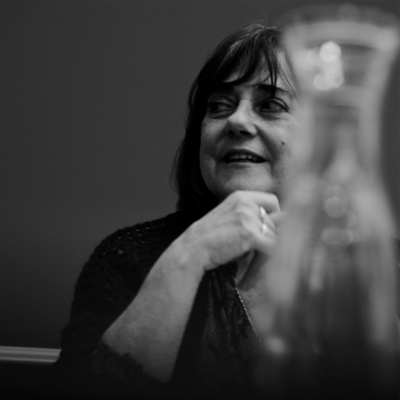


Leave A Comment